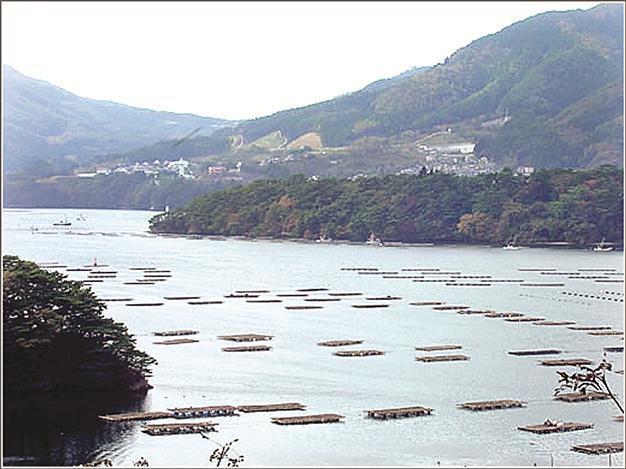Japanese oyster fishery healing with a little help
SANRIKU, Japan - Hurriyet Daily News

Toshimi Abe says the oyster business in the Sankuri area will become even better than
the pre-tsunami day.
Toshimi Abe, a 35-year-old fisherman from Japan’s Miyagi prefecture that neighbors Fukushima, sails to sea every morning at 04:30 in the freezing cold from the Sankuri area, hoping to rebuild his oyster business that was badly hit by last year’s devastating tsunami.
Oysters, mostly known for their prestigious place in French cuisine, are a tough business in Japan, as production is dependent on external factors like the weather, and the market demands standardized products, which nature is unable to deliver on its own.
After losing his father in the tsunami, Abe, the only remaining oyster cultivator in a family with three sons, said he found it hard to return to the business that he had been doing for 10 years. His elder brother had quit due to the bad smell of the work and disputes with their late father.
“I don’t like the smell either,” he joked, during a rich oyster lunch at one of his customer’s restaurants.
However, a new business idea that is set to unite the oyster fishermen under a joint company, as well as efforts to adopt the French fishery method that is based on collecting oyster seeds with plastic imitators - instead of re-used shells - have apparently re-motivated Abe. The rest of the process, from placing them in oyster shells to letting them grow in the ocean, is natural.
The newly-founded oyster company is called “Wagaki,” and Abe is one of the managers at the body that unites 20 oyster farmers and a distributor working in three major seed oyster production areas: Mangoku-ura, Higashi Matsushima, and Oshika-hanto.
Looking for volunteers
The region produces 5,000 tons of oysters every year, which amounts to around one-seventh or one-eighth of Japan’s total output. Still, last year’s earthquake and subsequent tsunami destroyed all the fields, locals said, adding that it took more than two years for oysters to grow to the necessary size.
The new company has an offer for those who would like to contribute to the restructuring there. Within the scope of the “owners program,” volunteers may buy one share for 10,000 yen (around 100 euros), which will return to them around 20 oysters - but no sooner than two years.
However, this is only for domestic shipment. Japan is not basically an oyster exporter, but it sells limited amounts to Hong Kong.
Cruisers rebuild shipsIn addition to oyster farmers, touristic cruise firms in the close-by Matsushima Bay are also fighting to recover, a mood in fact spread across the whole tsunami-hit region. Many who lost their ships in the disaster have since tried to return to business.
The large wave, which exceeded 15 meters, did not only swallow ships and houses, but also two of the 260 tiny islands there, according to Kouji Irokawa, director of local Matsushima Shimameguri Kankousen.
“At first I thought about quitting,” Irokawa, who also lost his ship, told the Hürriyet Daily News. “But seeing the amount of support from volunteers outside the region and the country I thought I had to carry on.”

